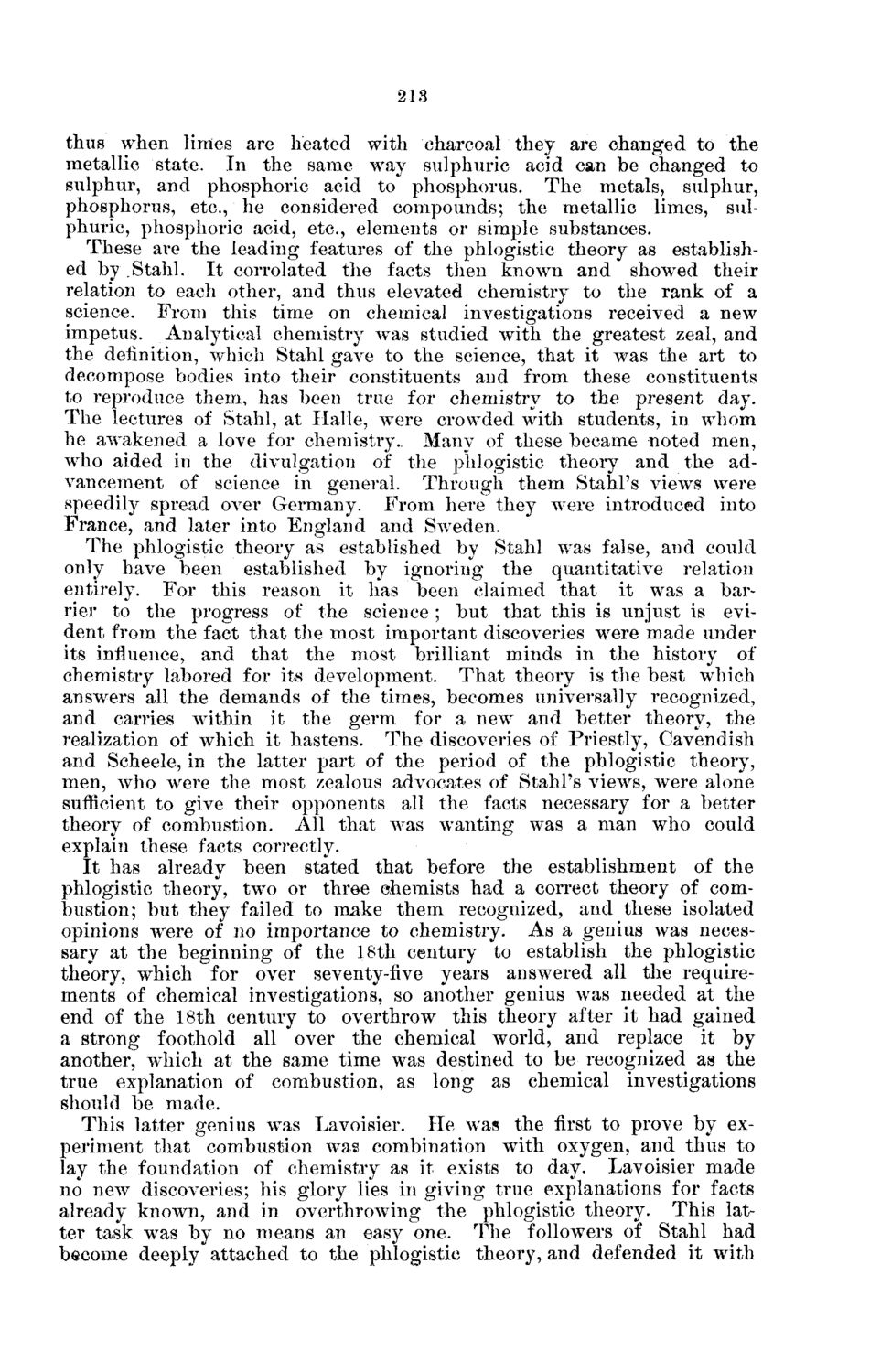| |
| |
Caption: Board of Trustees Minutes - 1878
This is a reduced-resolution page image for fast online browsing.

EXTRACTED TEXT FROM PAGE:
213 thus when limes are heated with charcoal they are changed to the metallic state. In the same way sulphuric acid can be changed to sulphur, and phosphoric acid to phosphorus. The metals, sulphur, phosphorus, etc., he considered compounds; the metallic limes, sulphuric, phosphoric acid, etc., elements or simple substances. These are the leading features of the phlogistic theory as established by.Stahl. It corrolated the facts then known and showed their relation to each other, and thus elevated chemistry to the rank of a science. From this time on chemical investigations received a new impetus. Analytical chemistry was studied with the greatest zeal, and the definition, which Stahl gave to the science, that it was the art to decompose bodies into their constituents and from these constituents to reproduce them, has been true for chemistry to the present day. The lectures of Stahl, at Halle, were crowded with students, in whom he awakened a love for chemistry. Many of these became noted men, who aided in the divulgation of the phlogistic theory and the advancement of science in general. Through them Stahl's views were speedily spread over Germany. From here they were introduced into France, and later into England and Sweden. The phlogistic theory as established by Stahl was false, and could only have been established by ignoring the quantitative relation entirely. For this reason it has been claimed that it was a barrier to the progress of the science; but that this is unjust is evident from the fact that the most important discoveries were made under its influence, and that the most brilliant minds in the history of chemistry labored for its development. T h a t theory is the best which answers all the demands of the times, becomes universally recognized, and carries within it the germ for a new and better theory, the realization of which it hastens. The discoveries of Priestly, Cavendish and Scheele, in the latter part of the period of the phlogistic theory, men, who were the most zealous advocates of Stahl's views, were alone sufficient to give their opponents all the facts necessary for a better theory of combustion. All that was wanting was a man who could explain these facts correctly. I t has already been stated that before the establishment of the phlogistic theory, two or three chemists had a correct theory of combustion; but they failed to make them recognized, and these isolated opinions were of no importance to chemistry. As a genius was necessary at the beginning of the 18th century to establish the phlogistic theory, which for over seventy-five years answered all the requirements of chemical investigations, so another genius was needed at the end of the 18th century to overthrow this theory after it had gained a strong foothold all over the chemical world, and replace it by another, which at the same time was destined to be recognized as the true explanation of combustion, as long as chemical investigations should be made. This latter genius was Lavoisier. He was the first to prove by experiment that combustion was combination with oxygen, and thus to lay the foundation of chemistry as it exists to day. Lavoisier made no new discoveries; his glory lies in giving true explanations for facts already known, and in overthrowing the phlogistic theory. This latter task was by no means an easy one. The followers of Stahl had become deeply attached to the phlogistic theory, and defended it with
| |